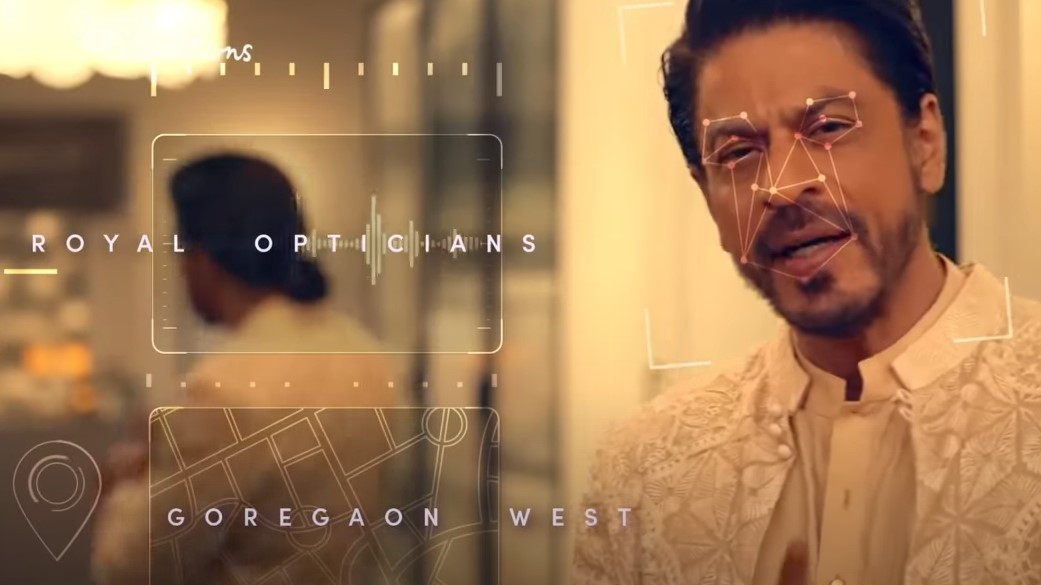CTV becomes the centre of the marketing revolution
Clearly, 2024 will be another big year for connected TV (CTV), a term that usually refers to a wide range of internet-connected smart TVs. The popularity of this phenomenon is growing massively – in the US, the number of households with CTV surpassed the number of households with conventional terrestrial TV for the first time in history last year. Data from eMarketer shows that 87% of US households use CTV, with streaming platform Netflix leading the way with more than 65 million subscribers in the US alone. Obviously, other devices such as game consoles (PlayStation, Xbox, Nintendo Switch and others) and Blu-ray players also play a role.
In this context, a certain democratisation of the TV advertising market is discussed in general. The transition to CTV opens up a more competitive environment in which the size of the brand and its marketing budget will be less important. Moreover, the popularity of CTV is growing across generations and brands will have to adapt their strategies accordingly, including those targeting older generations. With a bit of exaggeration, we can say that this shift will affect both smaller regional companies and international corporations with a global reach. This is similar to the revolution in digital advertising that took place through Facebook and Instagram in the early 2000s.
One of the world-famous brands that has been working on its CTV strategy for a long time is the American fitness brand Peloton. The company made its first ever foray into this marketing area in 2020, when it used the full potential of CTV to promote its new digital app – with interactive ads and messages tailored to the demographics of different target groups being an integral part of the promotion. And because it was successful, the company built on this successful strategy last year with its new Mother’s Day spot, which also achieved great success across platforms.
 https://www.ispot.tv/ad/1lax/peloton-2023-mothers-day-something-shell-come-back-to
https://www.ispot.tv/ad/1lax/peloton-2023-mothers-day-something-shell-come-back-toVideo: Peloton – 2023 Mother’s Day: Something She’ll Come Back To (2023)
Retail players to enter the advertising market
CTV is an ideal framework in the sense that all other foreseeable trends in television advertising are mediated by its expansion. The year 2024 could well mark the dawn of the phenomenon of retail media networks (RMNs). These are nothing more than digital platforms offering paid advertising space that are owned and operated by retail companies. Their main undeniable advantage is that they have direct input data on their customers and visitors to their websites and apps, so they have a very large and useful portfolio of information that other brands are happy to pay for. This can be particularly useful for those operating at a local level.
“The meteoric ascent of retail media networks signifies a game-changing shift in the digital landscape. Their strength lies in the utilisation of first-party data, which empowers retailers to reach customers not just on their own websites and apps but also beyond these familiar digital confines. This approach enables retailers and brands to broaden their reach to drive acquisition, and scale audiences effectively,” believes Jeff Fagel from Madhive. At the same time, he foresees that more and more partnerships will be formed at the local or brand level. Simply put, this means more personalised content for specific viewers based on the history of their digital footprint.
Although Amazon, which has popularised the RMN trend globally to some extent, may be more popular at the domestic market, it had a very serious competitor last year, at least in terms of e-commerce sales. The Walmart Connect platform, operated by the Walmart chain, grew 22% year-on-year in 2023, twice as much as Amazon. This platform is a perfect example of how to properly combine shopping and advertising to make it as minimally invasive as possible and efficient for consumers.
Video: Walmart – Change the way brands connect with customers (2021)
Interactive ads will become the ubiquitous standard
Interactive advertising formats go hand in hand with RMN. The very fact that viewers can interact with the ad directly on their screens increases their engagement and, more importantly, their interest in what the ad is communicating. These viewers will ideally be less inclined to just skip the ad. Another indisputable advantage for both sides of the transaction is that these formats are de facto a direct route to the advertisers’ websites and thus to the finalisation of the purchase. In this context, there are discussions of marketable ads, which take on various playful forms not only on TV screens with the sole aim of increasing engagement and involvement of the potential customer.
Classic product presentations, which summarise the main features of the product on offer, are still very popular in this respect. Of course, the user learns more if they click on the ad and enter an environment fully controlled by the advertiser. Marketers are also increasingly using QR codes, which industry experts consider to be one of the most effective tools for generating interest in what lies behind them. Compared to product presentations, it is also a more interactive experience because viewers usually have to scan the code with their phones. However, the moment of mystery clearly plays in the advertiser’s favour. A massive increase in popularity can also be expected for voice-activated purchases, which is compounded by the fact that more and more consumers own devices that can be controlled using voice commands. This is another way of increasing immersion that we will undoubtedly see more and more of in 2024.
We could hardly find a more immersive advertising experience in 2023 than the one jointly delivered by Warner Bros and Mattel for the premiere of Barbie. While the film trailer was in the centre of the campaign, the marketing strategy did not stop there at all. Through many exclusive partnerships, such as with the Xbox video game console and Airbnb, we saw an endless eruption of interactive advertising creative that made the Barbie campaign the most massive advertising campaign of the year.
Video: Barbie Main Trailer (2023)
Brands will place increased emphasis on audience expansion
All of the above leads to the conclusion that audience extension is becoming an increasingly necessary strategy for brands, which will certainly be adopted by many other market players in the new year. That is why namely the media companies entering this year with an eye on higher profits from advertising space are thrilled. In fact, audience expansion can work in two ways. The first approach is to capitalise on original audience data, where, for example, a streaming platform has a list of its subscribers and is able to find and target them outside of its own channels. The second approach relies on extending advertising to a specific demographic targeted by a competitor on one platform and subsequently reached in a similar way on other platforms.
“At a time when all marketers crave consumer attention, it is virtually impossible to achieve satisfactory results within a single streaming platform. On the contrary, it pays to see this service as a starting line that will allow you to reach your desired target audience in any other space where it typically operates,” describes Jon Kaplan from Madhive. Soon we may see megalomaniacal multi-platform advertising campaigns, with CTV playing a key role as a kind of liaison. Marketers have high hopes for linking with other channels, including greater reach, increased effectiveness, improved relevance and more accurate measurement of results. It is basically the kind of nifty package they have been wanting for a long time.
A successful audience extension strategy has been used by the University of California at Berkeley, for example, which both has its own data management platform and works with a marketing agency to reach new quality audiences with its advertising presence. The basic framework of this cooperation is the definition of the university’s profile disciplines, according to which the agency selects the most appropriate communication methods and media for this purpose.
Video: UC Berkeley – Discovery UC Berkeley (2023)
Streaming platforms will be threatened by “free” competition
We have talked repeatedly about streaming platforms. It is no exaggeration to say that they have been the catalyst for the revolutionary changes that the TV environment has undergone in the last decade. The move away from traditional linear television towards this interactive and cross-platform mix is driven, among other things, by the success of services such as Netflix, Amazon Prime Video and Hulu, to which even the traditional broadcasters had to respond. However, we are entering 2024 in an economic crisis characterised by high inflation and rising living costs, which again forces consumers to decide against regular subscription payments. Who benefits from this situation? Predominantly free ad-supported streaming television (FAST).
The logic of FAST is quite simple. You as a user can watch your favourite content interrupted by ads. On the other hand, you don’t have to pay any regular monthly fee. At a time when many people are considering optimisation of their household finances, it is the perfect way to still have an extensive content library to choose from, with the only tax being an imaginary return to a linear model of TV viewing. The most popular FAST, such as Pluto and Tubi, already have over 50 million monthly users, roughly equivalent to annual revenues exceeding one billion dollars. These revenues are generated by the interest of advertisers who are excited to have a channel where users can’t just skip ads as they wish. Again, we can assume that the growth of FAST will lead to a more intense interest in live events or specialised advertising channels allowing unprecedented scope for ad personalisation and niche marketing. Ads tied to unique premium content are a special option to be mentioned – naturally, such placements are the most prestigious and the costliest.
According to Omdia’s research, the US market for FAST is essentially made up of two categories of platforms – there are many small local platforms and the imaginary Big Five, which in aggregate accounts for about 20% of the total market. Specifically, these are Pluto TV Spotlight, Star Trek, Pluto TV Action, Pluto TV Reaction and Pluto TV Comedy. It is not too hard to see who is currently exploiting the FAST phenomenon the most – of course, it is the media consortium Paramount Global through its Pluto TV division.
Video: Pluto TV – Meta Quest (2023)
Artificial intelligence will change the advertising world beyond recognition
Last but not least, we can expect artificial intelligence to be even more aggressive in finding its way in 2024. We could already see the first germs of how AI is able to transform the marketing market last year, so we can expect quite a wild ride this year. Some analysts are even talking about an upcoming advertising revolution. AI algorithms are already setting the pace in many market sectors, and that alone is a source of very useful and valuable data. For marketers, this opens up a whole new perspective of even more consistent personalisation and opportunities for active audience engagement. Needless to say that the era when AI will be able to analyse volumes of data to create a personalised advertising scheme for each individual user is round the corner. The market hopes to increase conversion rates through dynamic pricing strategies – a possibility that already looks very promising and, what’s more, realistic.
“Needless to say, this shift is subject to unimaginable innovation and scaling. The advertising platforms that succeed in this environment are those that have worked steadily to improve their technical backgrounds and have the computing power to process the robust volumes of data that this approach anticipates,” explains Madhive’s co-founder, Adam Helfgott. This opens up space for further strategic partnerships. One that will further connect the world of marketing with the world of technology. Artificial intelligence that will be able to process incredible volumes of data in seconds is likely to become an existential necessity in the future. So will the ability to shape strategic business decisions in a split second, which AI will help with as well. It is quite possible that when we look back in history in a few years, we will find that 2024 was the date of the paradigm shift.
More and more AI-generated ads are being created. Products from OpenAI have been used by multinational corporations such as Coca-Cola or Heinz ketchup. But a particularly interesting example has emerged in the marketing workshop of Mondelez, which has, for example, Cadbury chocolates in its portfolio. Using DALL-E 2 functionality, it created an advert specifically for the Indian market featuring popular presenter Shah Rukh Khan. In doing so, the company achieved significant cost savings while delivering a highly personalised and culturally relevant consumer experience.
Video: Cadbury – Shah Rukh Khan-My-Ad (2023)
Of course, the above are just some of the trends for 2024, but the expert community more or less agrees on them. It is probably safe to say that, in addition to these downright strategic shifts, we can look forward to a lot of advertising creative that will be driven by the values that consumers demand – an emphasis on originality, strong narrative construction, first-class technical execution and artfully constructed punchlines. Combined, it is a mix of quite diverse influences, but one that builds high expectations. So, we definitely have something to look forward to this year!


